Falaj Irrigation System
In 2006, Oman’s Falaj irrigation system was inscribed on the UNESCO World Heritage List. Sultan Qaboos once praised it, saying: “The Falaj system has existed in Oman for 2,700 years. This ingenious and original engineering marvel is Oman’s outstanding contribution to the world in the fields of irrigation, agriculture, and human civilization.”
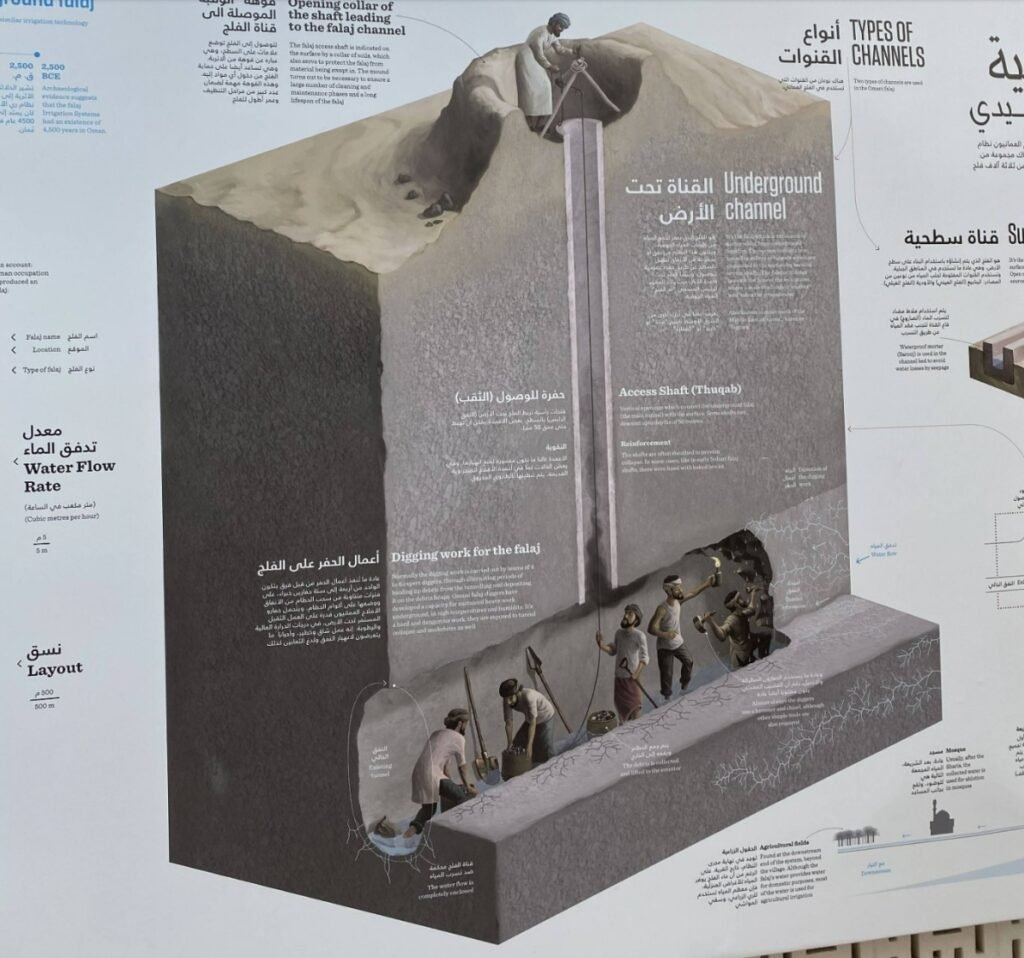
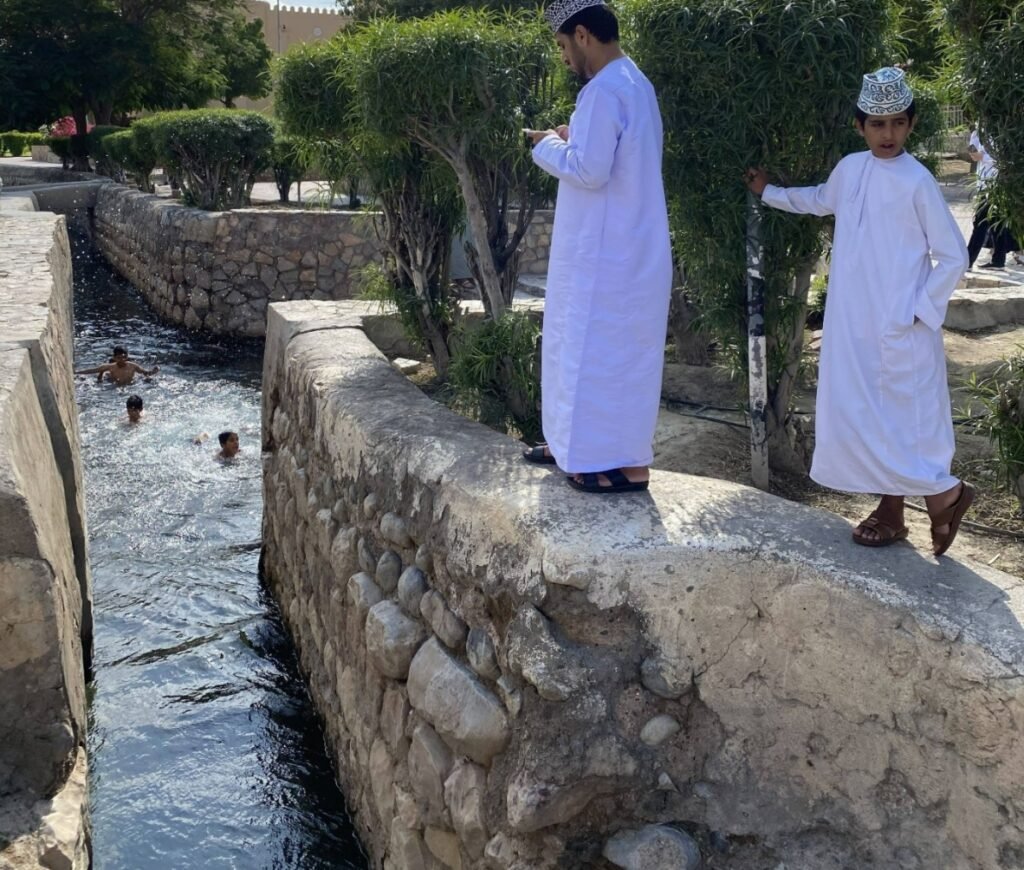
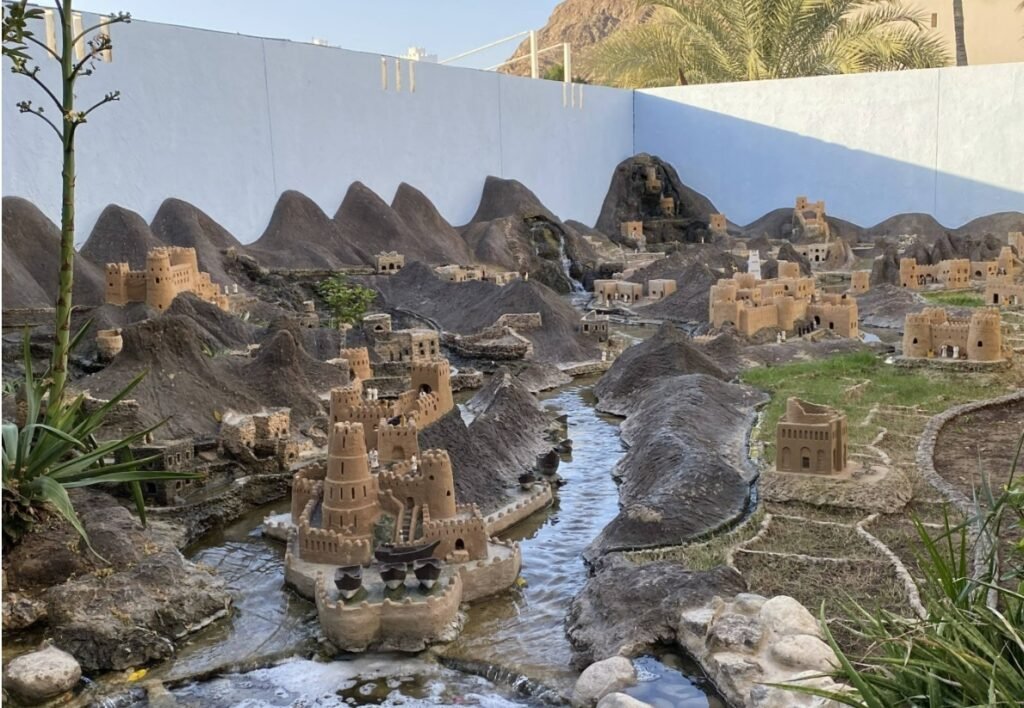
The Falaj irrigation system operates on principles similar to China’s Karez system. Today in Oman, we saw one of more than 3,000 channels. The resourceful and skilled Omani people use the Falaj system to channel mountain runoff from 8 kilometers away into the waterways. The mountain water is clear and cool, and the channels also serve as a natural playground for children to enjoy.
Nizwa
Nizwa is the largest inland city in Oman, located about 130 kilometers west of Muscat. From the 8th to the 16th century, Nizwa served as the capital of the First and Second Imamate during the Yaruba Dynasty. In the early 10th century, the Imamate briefly established its capital here. Though Oman is small, it boasts over 500 forts of various sizes, most of which were built by the Portuguese during their colonization in the 14th century.
The ancient fort we visited today was constructed by Omanis in the 17th century to defend against the Portuguese, who were trying to re-establish control after their initial withdrawal. Nizwa Fort is also the largest round castle on the Arabian Peninsula.
Nizwa Fort is located along an important trade artery, strategically overseeing the flow of commerce between the interior regions. From the high vantage points within the fort, you can look out over the lush date palm oasis and the Falaj irrigation channels. During dangerous times, the fort provided a safe haven, protecting the oasis, nearby water sources in the mountains, and the people who had lived in Nizwa for generations.
The fort features a complex structure and organization. Originally, an outer protective wall surrounded the area, enclosing both a castle and a fortress. The castle served administrative and residential purposes, while the fortress was built for defense. The architectural layout follows traditional Arab design, with the structures arranged around a massive rectangular wall that encloses the complex.
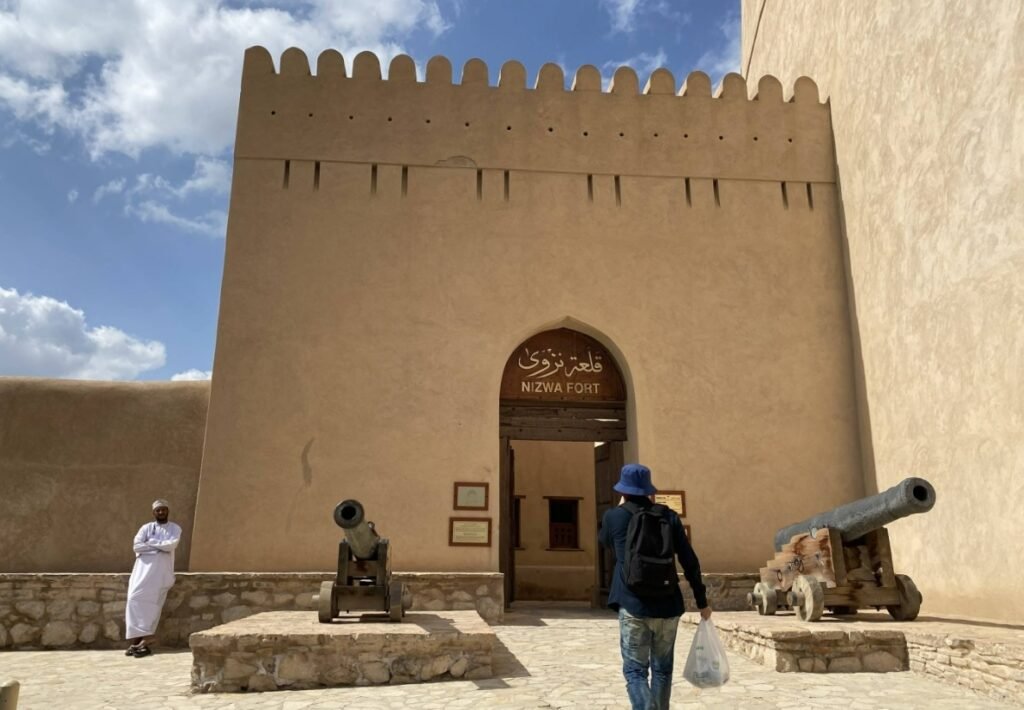

The defensive tower within the fortress was originally built in the 17th century and later expanded into the massive round fort we see today. The round fort is equipped with various features for shooting, cannon fire, and traps to ensnare enemies. One ingenious defense mechanism involved pouring scalding date syrup on intruders to inflict burns. The fort was an impenetrable stronghold, like a wall of iron and copper, making it nearly impossible to breach.
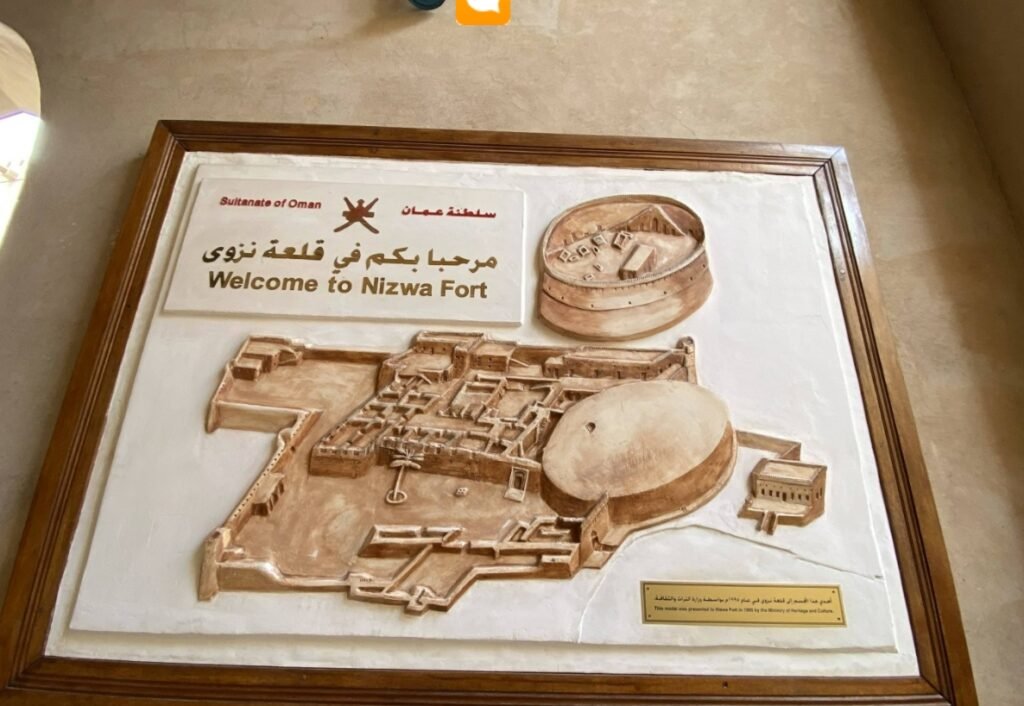
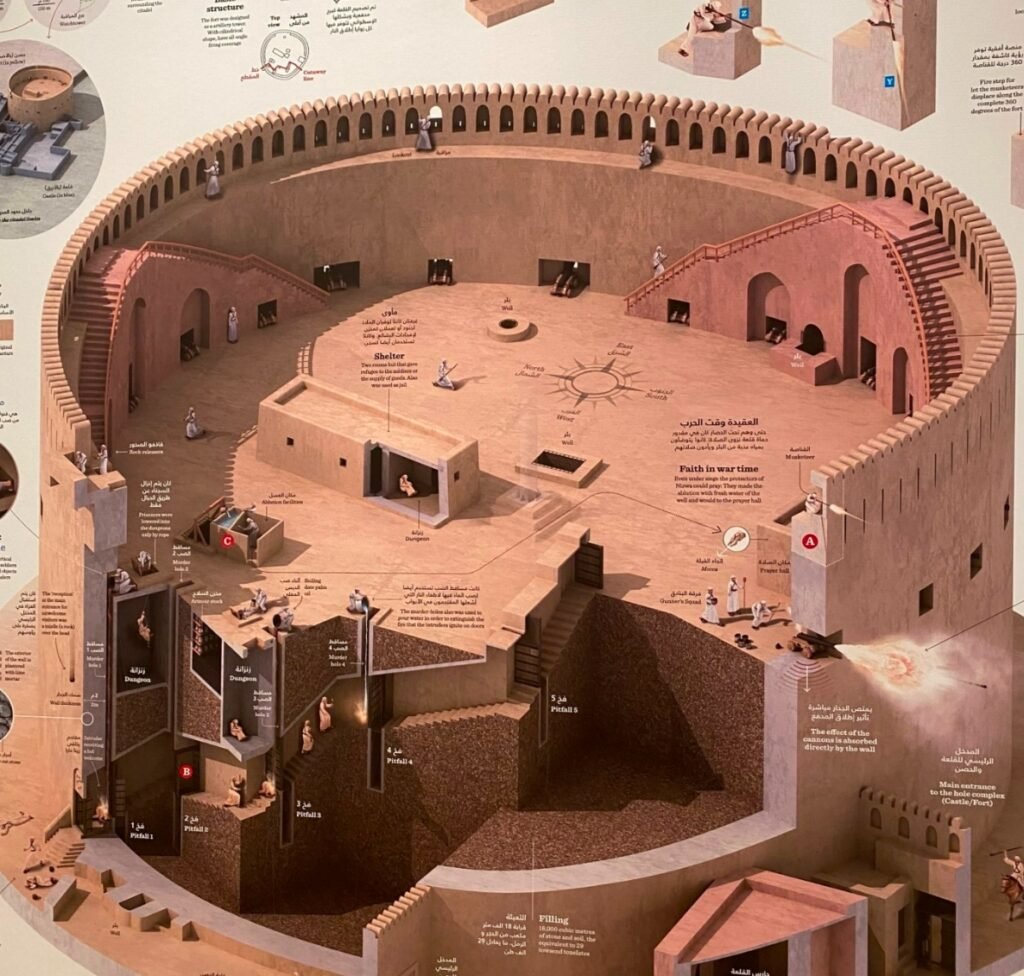
The entrance to the castle is narrow and quiet, making it hard to imagine the bustling scenes or fierce battles that once took place here.
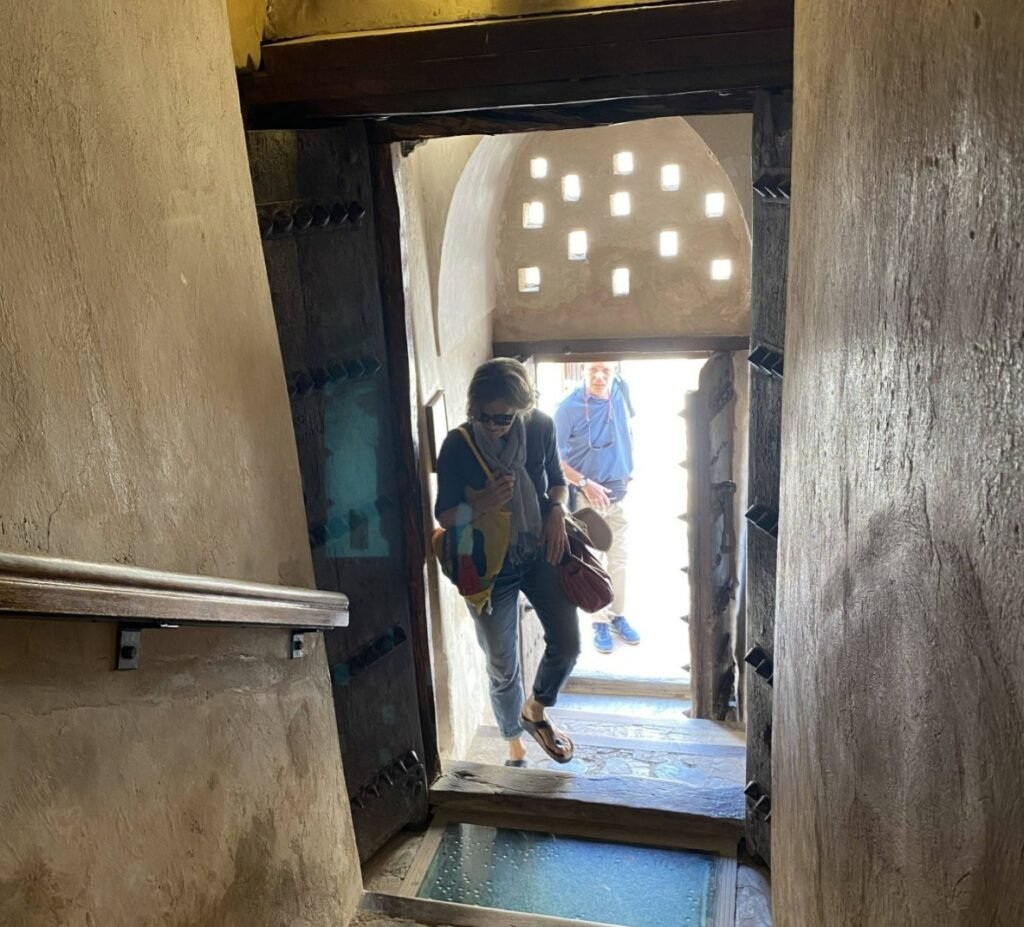
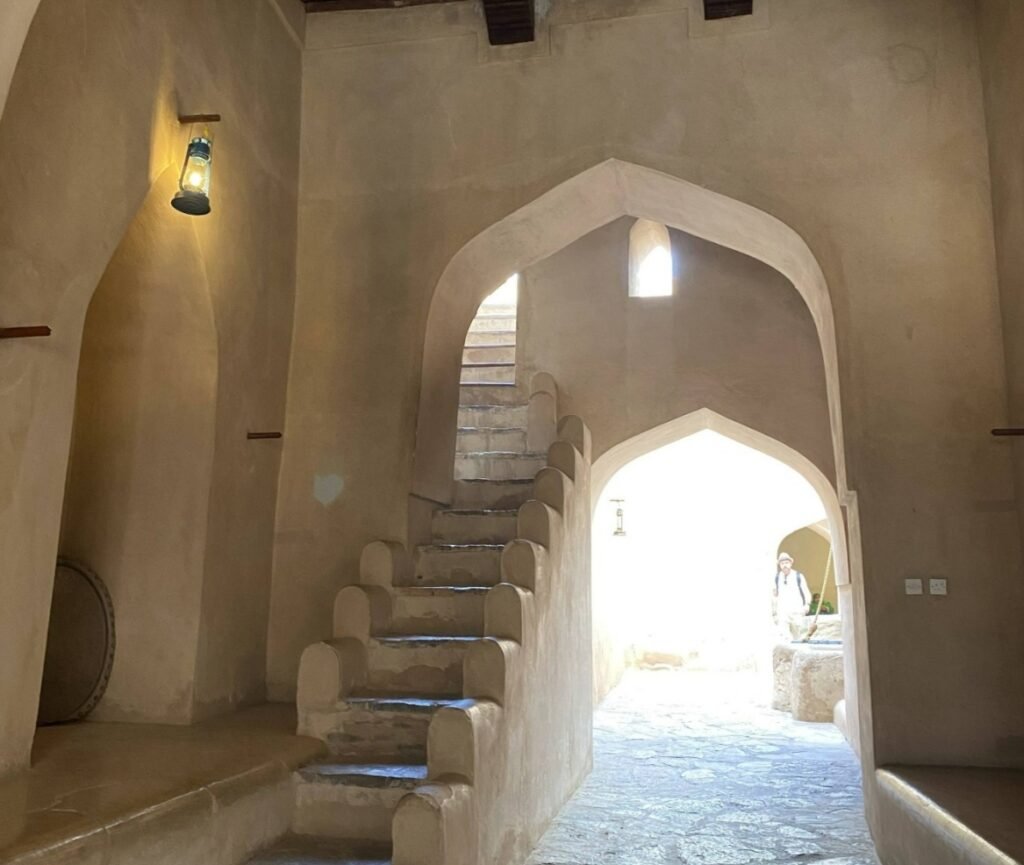
Looking up, a narrow slit at the top lets sunlight stream in. This was the opening used to pour scalding date syrup onto invaders. As attackers climbed the stairs, the blazing hot syrup forced them to halt in their tracks.
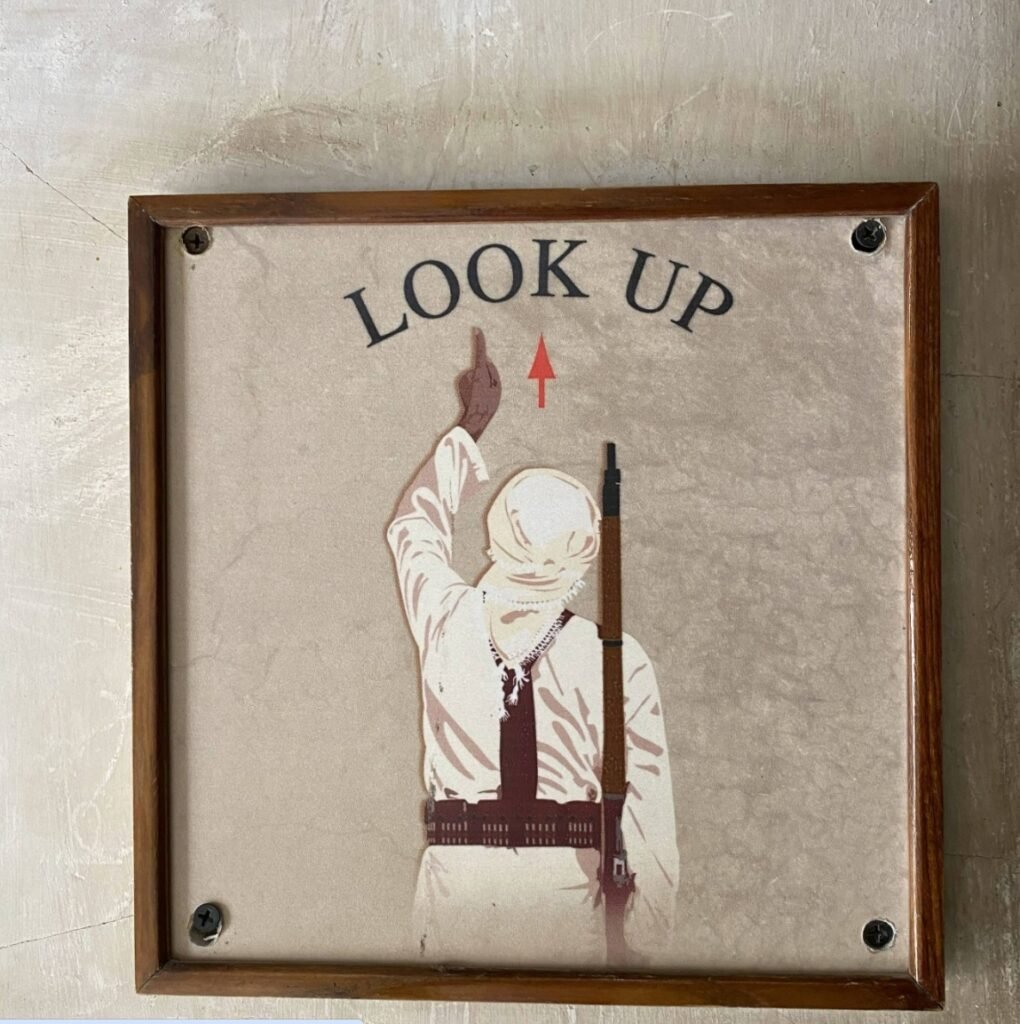
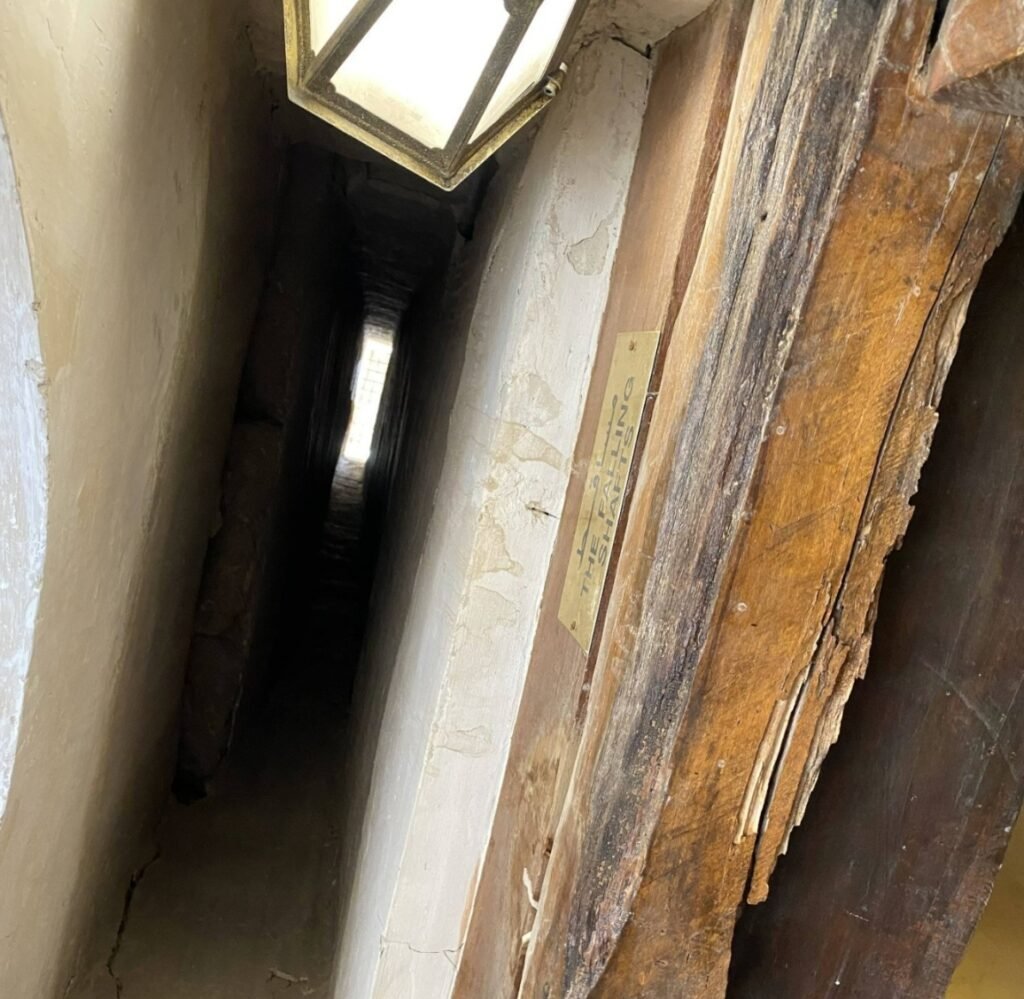
Following the narrow spiral staircase, we arrived at the circular courtyard of the fortress. The open view stretches far and wide. What was once a battlefield is now a place where people reflect on history. Yet, the sense of grandeur remains, and the spirit of steadfast defense still lingers.
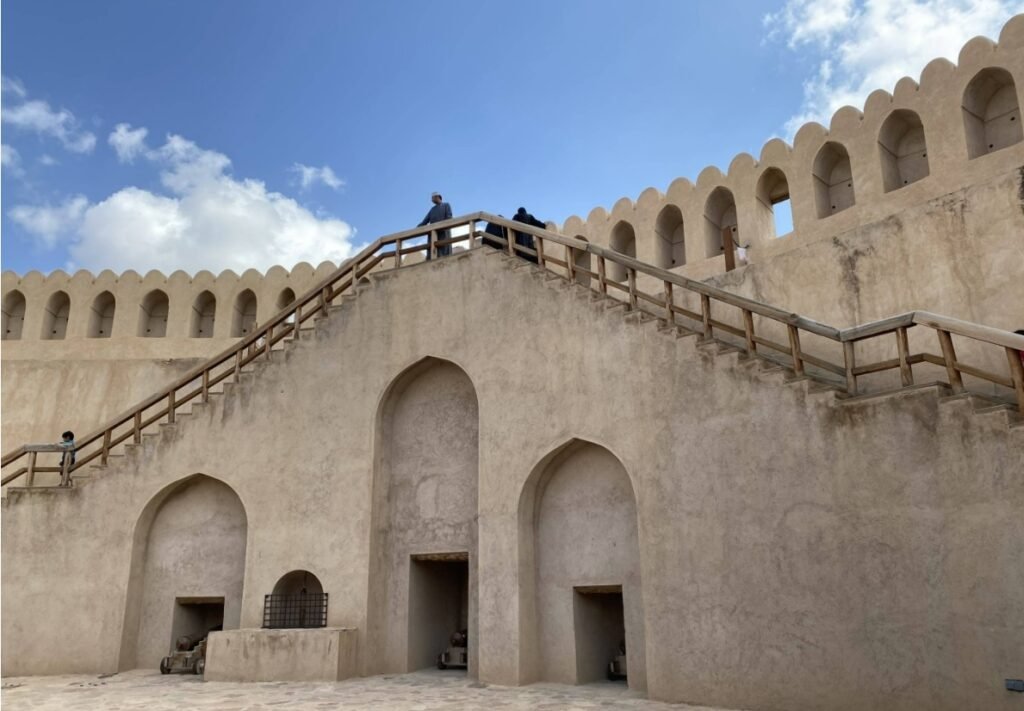
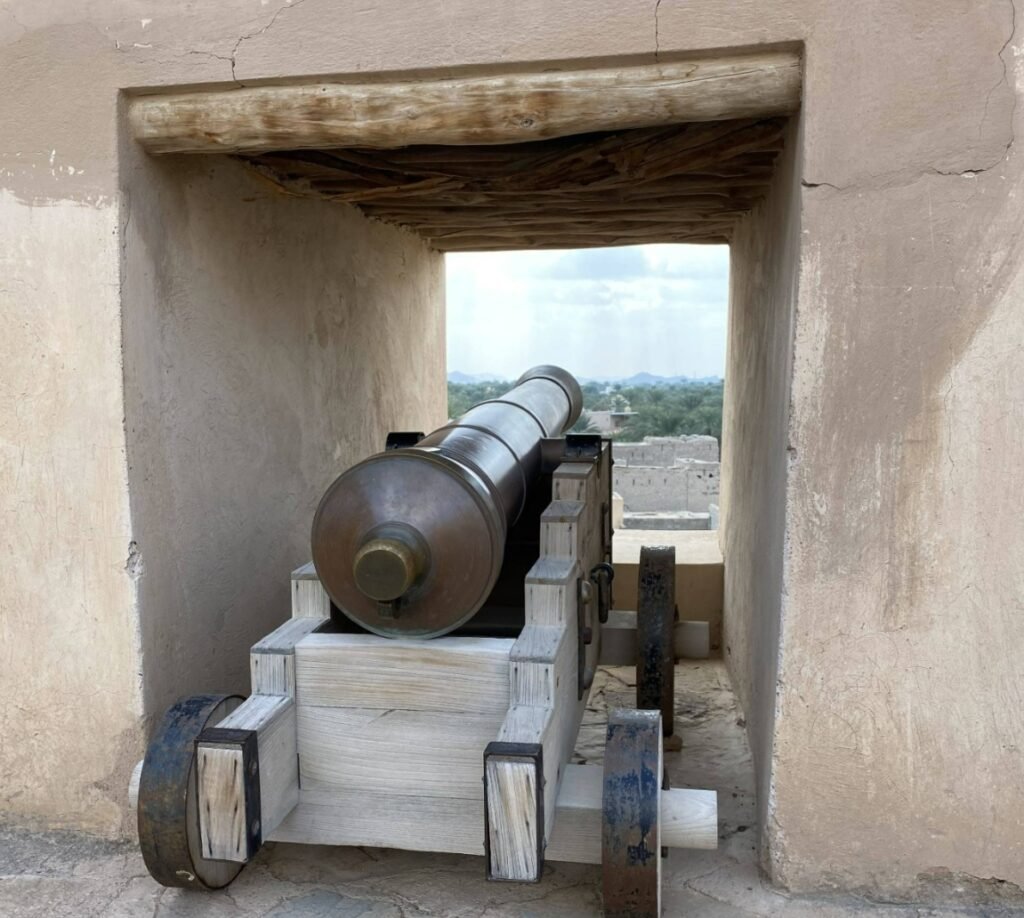
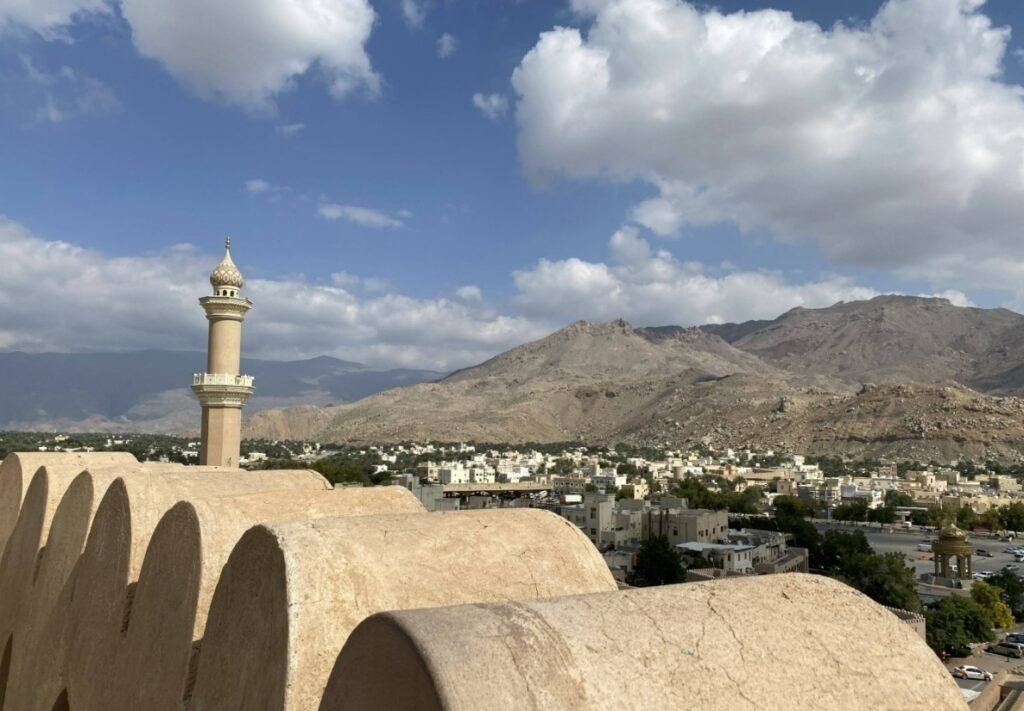
The Friday Mosque stands beside the fortress, clearly visible through the narrow gaps between the walls. The Omani people have achieved a perfect blend of national resilience and spiritual revival. Within the vast defensive structure, the mosque’s minaret rises with authority and defiance, a constant reminder to the world that Nizwa will forever be the home of the Omani people.
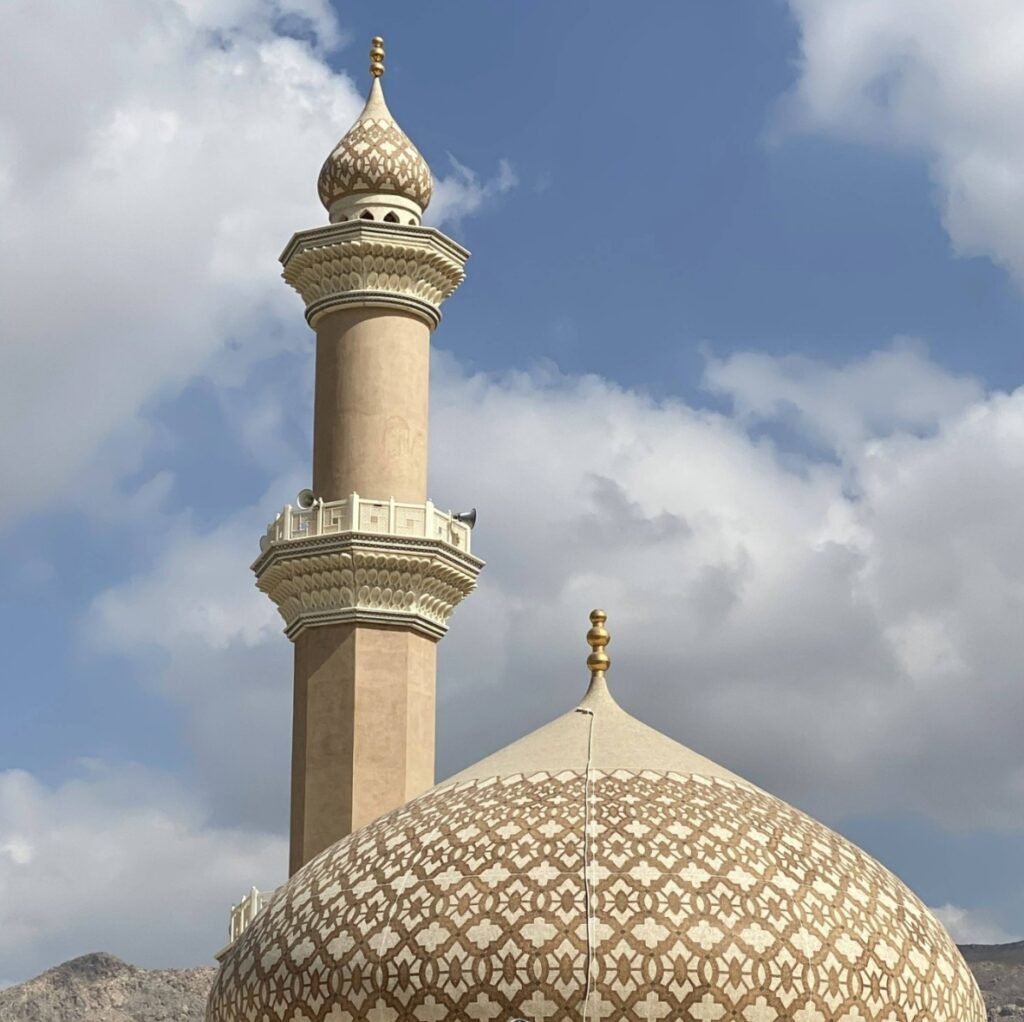
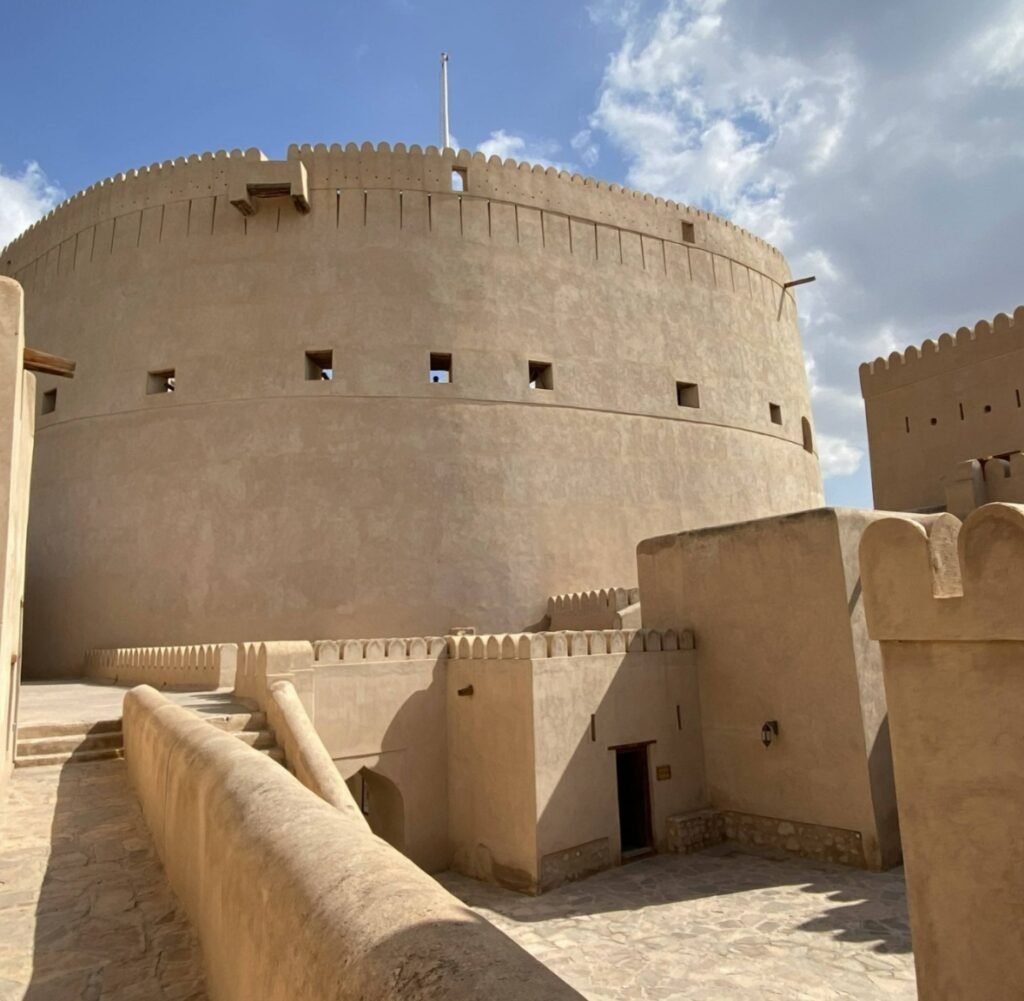
Bahla Fort
Oman’s history includes the rule of the Yaruba Dynasty, which was later overthrown by a rebellion led by the Al Said family. The current Omani dynasty is the 14th Al Said dynasty. During the early period of the Al Said rule, Oman’s territory was at its peak. However, internal strife and British colonialism transformed the maritime empire into the nation we see today.
Bahla Fort, along with its adjoining walls, flourished between the 12th century and the late 15th century. Oman has long been a historic center for the production of frankincense and aromatic resins. Back in the day, all trade routes passed through this area, resulting in a vibrant and prosperous scene.
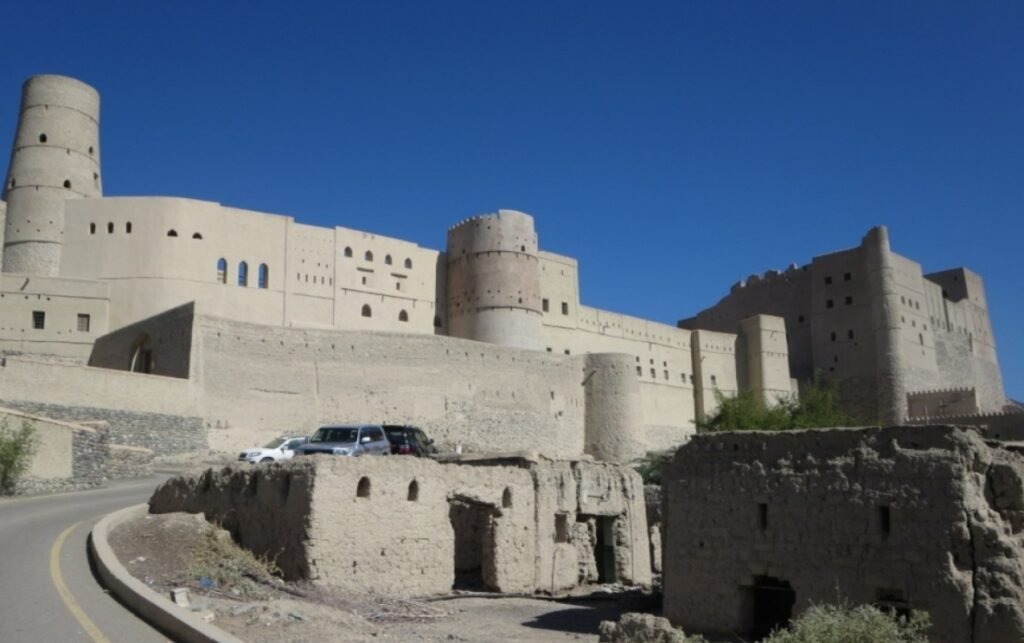
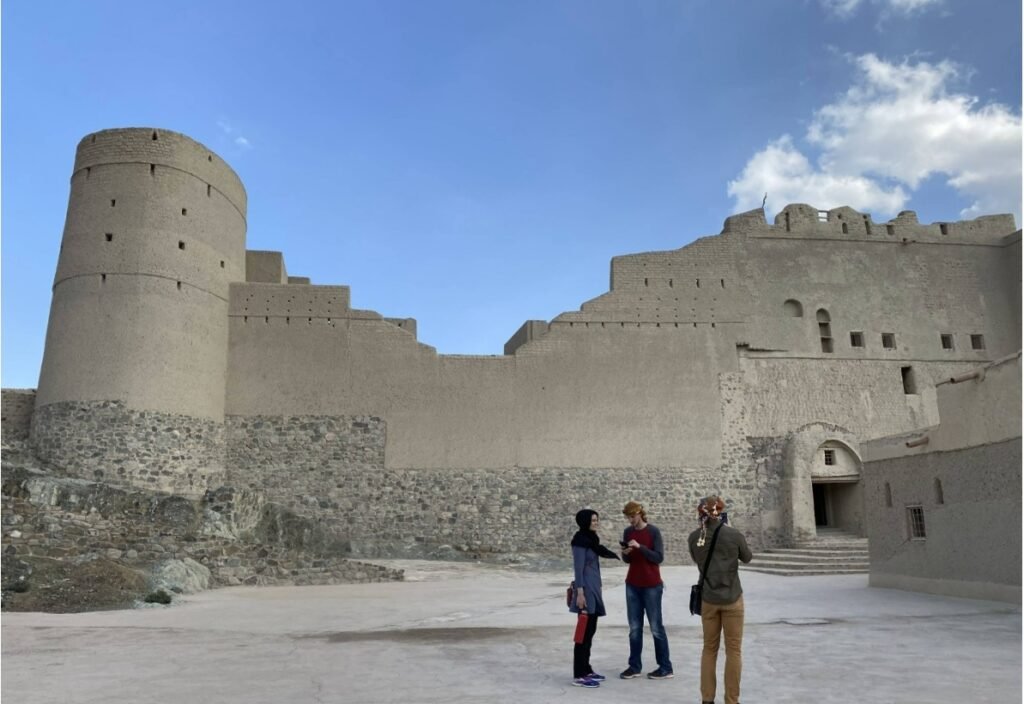
The fortress is surrounded by walls with foundations made of mud bricks and stones. The castle itself was built using a mixture of palm tree trunks and mud. Unfortunately, during the rainy season, the walls often show signs of erosion and damage, which is truly a shame.
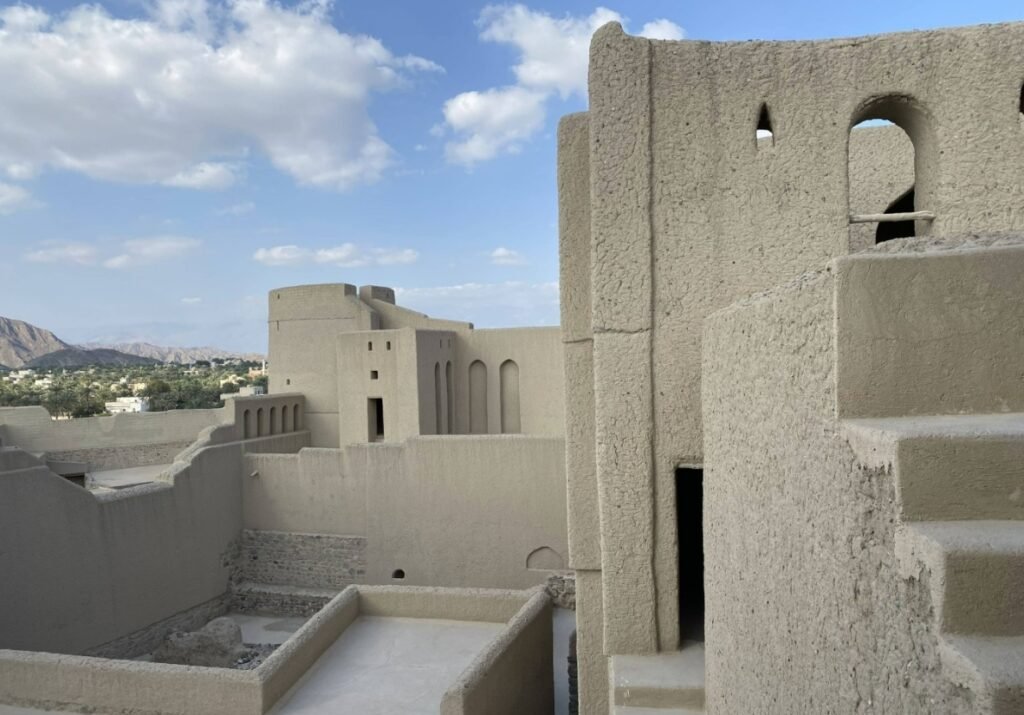
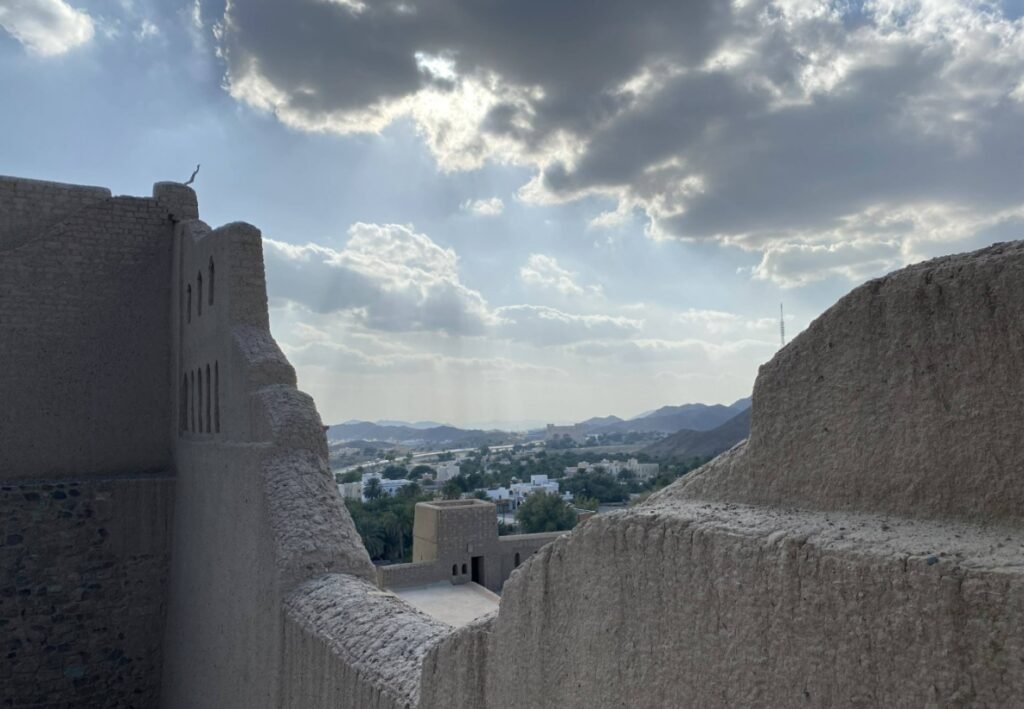
Jabreen Castle
Jabreen Castle is considered the most beautiful historic castle in Oman. It was originally built in the late 17th century by the same person who commissioned the construction of Nizwa Fort.
Jabreen Castle was built during a time of peace and initially served as a residential palace. Over time, additional functions were added, including a library and a mosque. For safety reasons, the castle was later equipped with extensive defensive and military features.
Jabreen Castle is the most exquisite castle I saw in Oman. It has a three-story structure, including a reception hall, dining area, meeting rooms, stables, library, and classrooms.
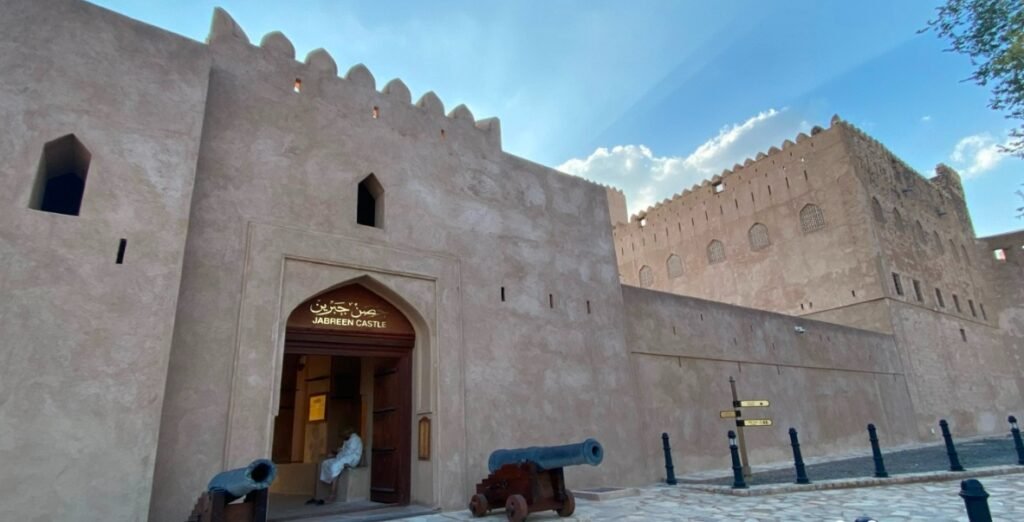
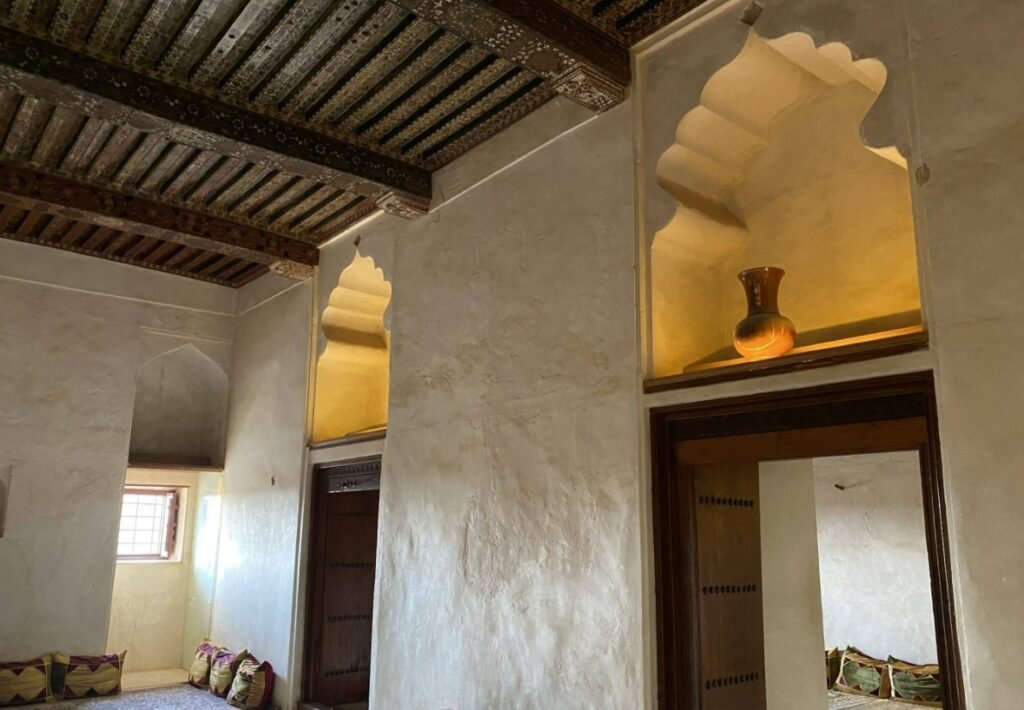
This exquisite structure features intricately patterned stone-brick windows set high along the walls, allowing ventilation during hot days and providing ample natural light at night without the need for lamps. The door frames are as elegant as flowers, and the staircases are simple yet grand. Every detail is a masterpiece.
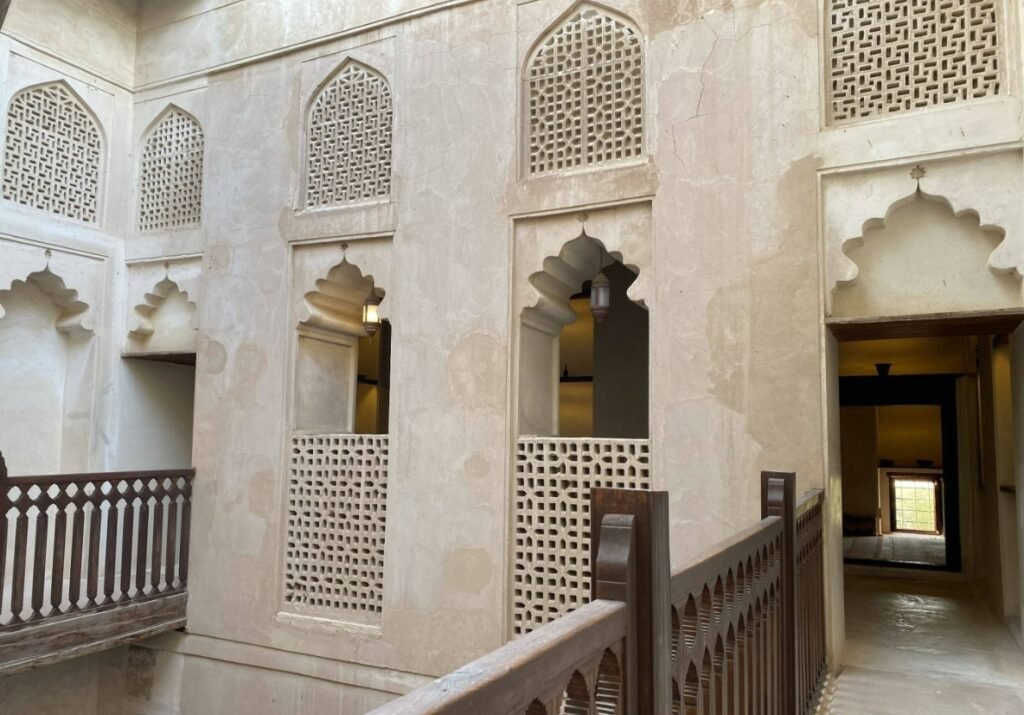
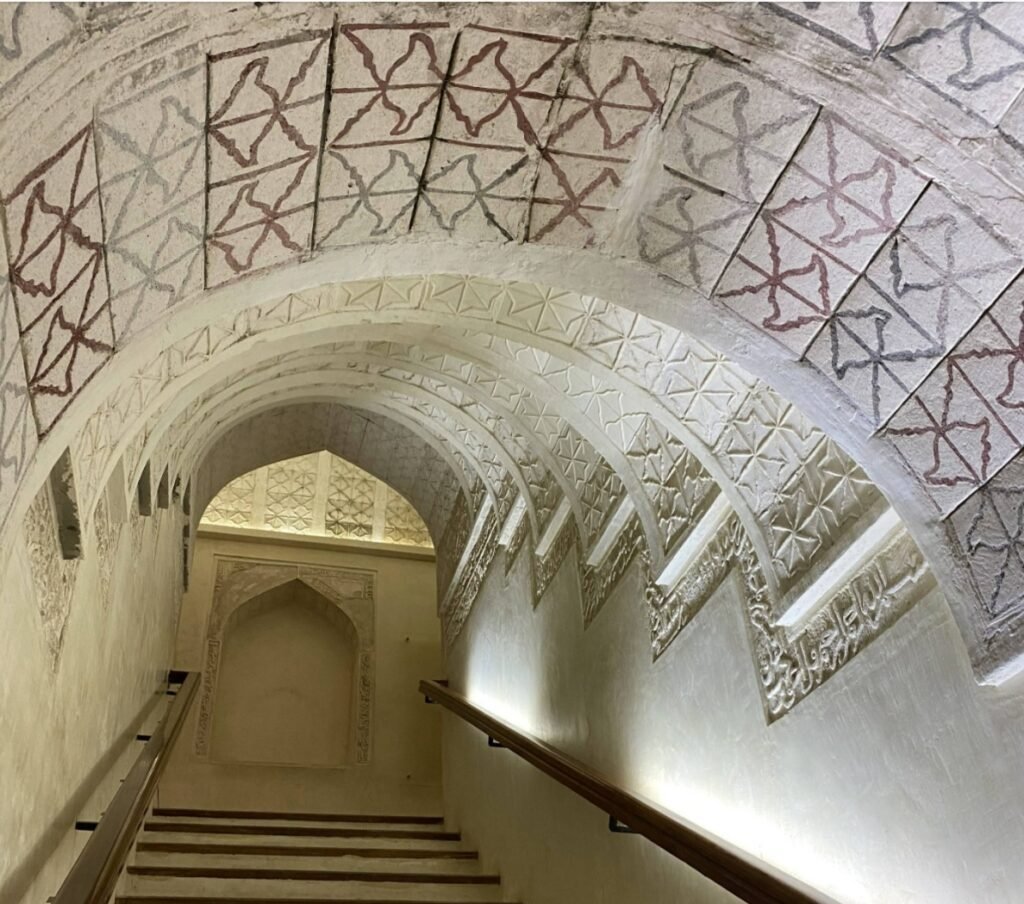
We happily wrapped up a day of exploring Oman’s castles. Reflecting on the efforts of the Omani people in the past, it’s incredible how much they adapted to their environment and made such effective efforts to protect their homeland and improve their lives. Each castle and monument stands as a powerful declaration of Oman’s sovereignty and strength to the world.
What were once mysterious and impenetrable fortresses now feel like intricate blocks and mazes, allowing us to wander, take photos, and experience the seamless blend of past and present. It’s truly a magical experience!


